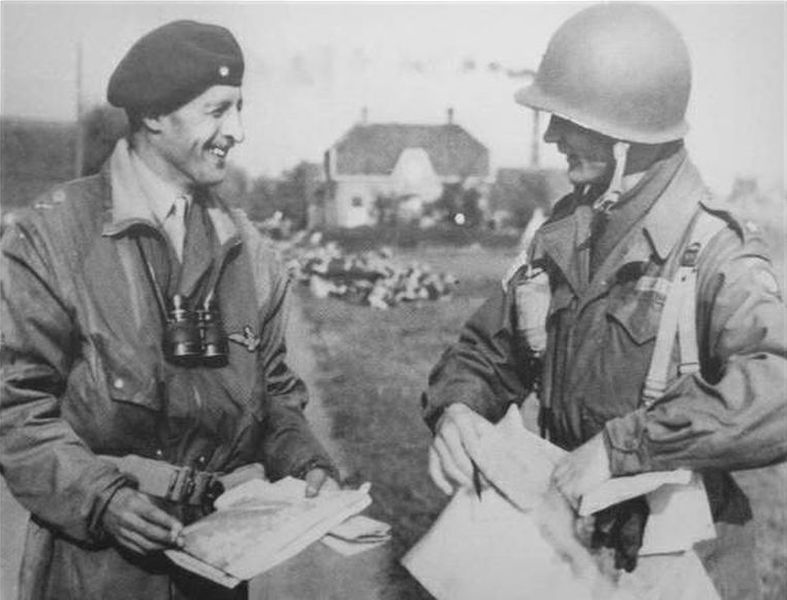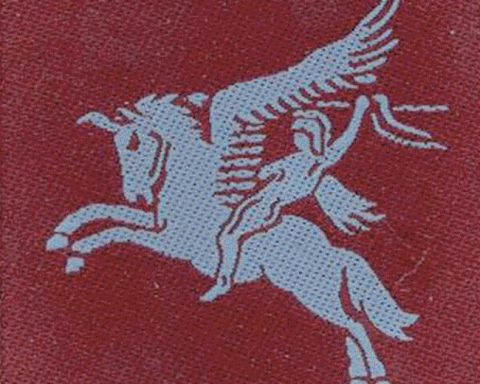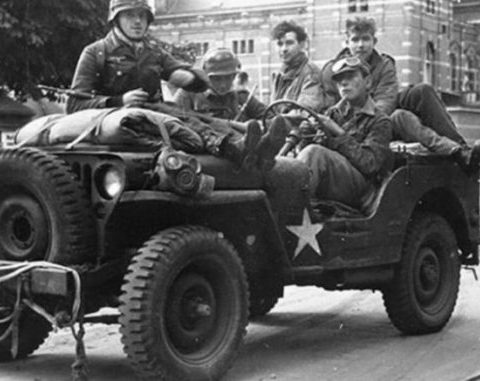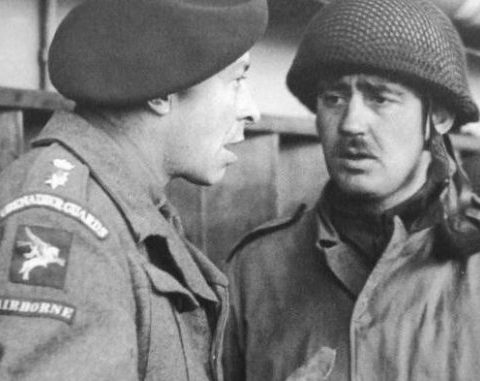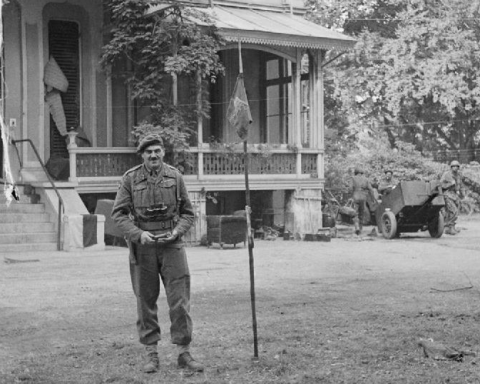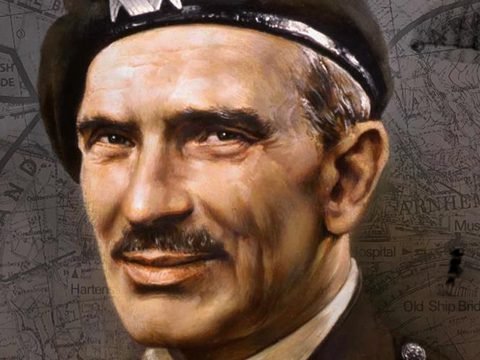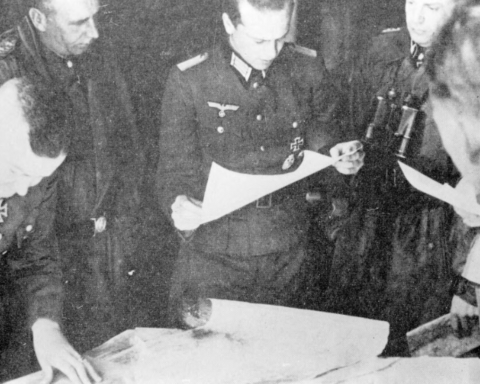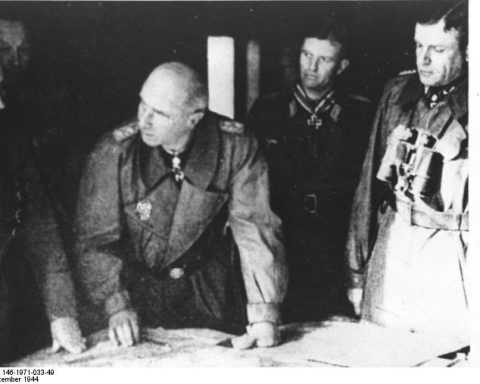British General Frederick “Boy” Browning was a man who undeniably had many qualities. Before and during Operation Market Garden, however, it was mainly his faults that affected the outcome of the fighting.
Historians are almost unanimous in their conclusion that Browning’s decisions contributed greatly to Market Garden’s failure.
Browning was a professional soldier who went to Royal Military College Sandhurst after training at Eton’s private school in 1914, just before the outbreak of World War I. After completing his training, he was sent to the Western Front as a second lieutenant. There he served as an officer under Major Winston Churchill.
Because of his courage, Browning was awarded the Distinguished Service Order and the French award Croix de Guerre in December 1917.
After World War I ended, Browning held various positions in the British Army as an officer. In 1928 he competed in the Olympics (bobsleighing) and in 1932 Browning married writer Daphne du Maurier.
1st British Airborne Division
In 1941 the British army leadership decided that the British army should also have its own airborne division. Browning became commander of this 1st British airborne division.
In that role he invented the division’s characteristic maroon-colored berets and was involved in the design of the well-known Pegasus-logo.
During Operation Torch in North Africa and Operation Husky in Italy, the 1st British Airborne Division played an important role. The British paratroopers were nicknamed “Rote Teufel” by the Germans because of their courage and hard fighting during these battles.
Browning made sure that the honorary name “Red Devils” was officially awarded to the British airborne troops.
In April 1944, Browning was appointed commander of the 1st Airborne Corps. This airborne army, in addition to the 1st British Airborne Division, consisted of the 6th British Airborne Division, the American 82nd Airborne Division and the 101st Airborne Division.
A bridge too far
After the Allied advance stalled due to long supply lines in late August 1944, Montgomery in early September came up with the plan for Operation Market Garden.
As commander of the 1st Airborne Corps, General Browning was responsible for elaborating the airborne portion of the operation. Like many Allied officers, Browning also had reservations about Market Garden succeeding. Browning is the one to whom the statement “ a bridge too far ” is attributed.
Browning had bragged against Montgomery that ‘his’ paratroopers of the 1st Airborne Division could hold out against the Germans for four days in Arnhem. But Browning later confessed to General Urquhart that he had added, “But I think we might be going a bridge too far.”
Despite his reservations, Browning developed the airborne plan. In addition, he made a number of capital mistakes that significantly affected the outcome of the fighting.
SS Armored Divisions
Browning’s first major mistake was that he ignored signals about the presence of strong German units near Arnhem. Both the Dutch resistance and British reconnaissance services reported the presence of the 9th and 10th SS armored division near Arnhem.
According to Browning, that could not mean much because the SS divisions had been destroyed by the British in France a month earlier. In reality, more than 7,000 hardened SS veterans were located near Arnhem. If the information about the strength of the German troops had been better appreciated, Market Garden would probably have turned out differently.
Wrong priorities
Another mistake Browning made during Market Garden preparations was that the 101st Airborne Division was prioritized. There were too few transport planes to deliver all three airborne divisions to their drop zones at the same time.
Browning chose to fly over the 101st Airborne Division, which would land in Brabant, in its entirety. The 82nd Airborne Division that would land near Groesbeek would be transferred in two days. The British 1st Airborne Division, together with the Polish Parachute Brigade, would land in three days west of Arnhem.
Browning prioritized the 101st Airborne Division because it would land closest to the front, making German resistance the greatest here.
The German Wehrmacht conducted an extensive study of the mistakes made by the British after the Battle of Arnhem. According to the Germans, the decision to land the entire 101st Airborne Division in Brabant, but in Arnhem, only part of the British Airborne Division was the biggest stupidity.
If the Germans had executed the plan, they would have turned it around. The 101st Airborne Division, which would be dropped closest to the ground forces and thus relieved the fastest, would have been dropped in multiple lifts by the Germans.
The British Airborne Division would have landed in its entirety near Arnhem by the Germans. They were farthest from the ground forces and should last the longest before being relieved.
Moreover, the decision to spread the landing of the British and Polish troops at Arnhem over several days meant that only a part of the landed paratroopers could advance to Arnhem. A large part of the troops had to remain behind to occupy the landing zones. On Sunday September 17, 1944, only three battalions, 2,500 men, were therefore available to occupy Arnhem.
Browning wants to join
Browning hadn’t been near the front during the war, which he desperately wanted. If Market Garden ended in success, the war would be over before christmas 1944. In Browning’s eyes, this was the last chance to see his part of the action. And so Browning, along with his 500-man headquarters, wanted to come to Nijmegen.
In fact, there was no useful reason for Browning to fly his headquarters to Nijmegen. Leading Market Garden could just as well have been done from England, perhaps even better. The 38 planes sacrificed to bring Browning’s headquarters to Nijmegen would have been much more useful if the British Airborne Division could have used them to land more soldiers near Wolfheze on Sunday, September 17.
Not a priority for the Waal Bridge
US General Jim Gavin led the 82nd ‘All American’ Airborne Division that landed near Groesbeek in the Nijmegen area. Gavin’s main task was to capture the Waal Bridge near Nijmegen and keep it occupied until the Allied ground troops reached Nijmegen.
As head of the 1st Airborne Corps, however, General Browning was Gavin’s superior. And Browning and his headquarters had landed at Groesbeek together with the 82nd Airborne Division. After landing, he gave Gavin a completely different list of priorities. There was no other option for Gavin than to follow the orders of his superior.
Browning first forced the Americans to occupy the hills near Groesbeek. The second goal was the bridge at Grave over the Maas. The third goal was to occupy three bridges in Nijmegen over the Maas-Waal canal. At the very bottom of Browning’s list of priorities was the conquest of the Waal Bridge.
Only in the evening of September 17, General Gavin was therefore able to send two companies to the Waal Bridge. At that time, the Waal Bridge was heavily defended by fresh German reinforcements with armored vehicles who had just arrived from Arnhem. If Gavin had moved up to the Waal Bridge immediately after landing, he would have found the bridge virtually undefended and could have easily secured it for the Allies.
Now it took until the evening of Wednesday 20 September, three days later, for the Waal Bridge to be captured by the Allies after heavy fighting and hundreds of deaths.
Polish as a scapegoat
It is clear that there are a lot of things you can blame Browning concerning Operation Market Garden. But after withdrawing the remnants of the British Airborne Division from Oosterbeek, Browning blamed General Sosabowski’s Polish paratroopers brigade.
According to Browning, the defeat at Arnhem was due to the Poles, who had not fought well. Browning’s framing was taken over and for decades the Poles have been used as scapegoats to explain the defeat.
Nowadays, the Poles have been completely rehabilitated and it is Browning who is held partly responsible for the failure of Market Garden.
Promoted away
The negative role that Browning had played during Market Garden had not gone unnoticed within the British army command. According to the British Commonwealth tradition, Browning was promoted to the other side of the world for this reason.
On November 20, 1944, two months after the Battle of Arnhem, Browning was appointed chief of staff of Lord Mountbatten. Mountbatten was the commander in chief of the Allied forces in Southeast Asia.
“I’ve got a pretty awful job,” Browning wrote to his wife when he learned he was being transferred.
After the war, Browning held various (administrative) positions within the British army and was a treasurer with the Duke of Edinburgh. Browning died on March 14, 1965 at the age of 68.
After the war, Browning never discussed Operation Market Garden.

